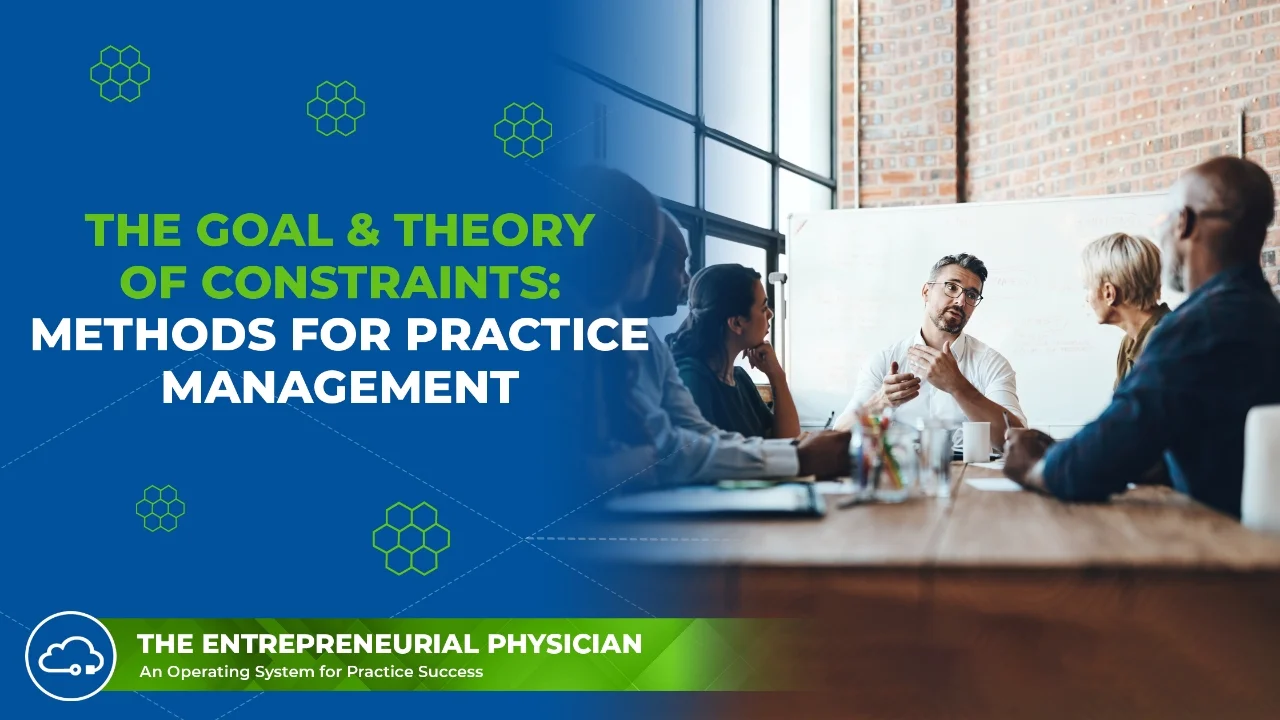Just as your body has “systems” (like the GenitoUrinary System) that work together to maintain overall health, so does your medical practice. For instance, your revenue cycle system, clinical information system, patient flow system, appointment scheduling system, marketing system, and reputation management system all function together.
Each system has a purpose, relationships to other systems, and specific inputs and outputs. Thinking of each system as a “black box,” there are observable attributes or qualities of well-constructed business systems that can serve as a health checklist for your practice.
These qualities include:
- Defined purpose or goal that aligns with the goals of your practice
- Describable and documented processes
- Dividing elements or segments into manageable units
- Efficiency, removing all wasteful steps and energies
- Delegating elements to the least costly resource
- Measurable and manageable metrics
- Resilient or fault-tolerant systems
- Automatable procedures
- Scalable operations
Let’s deal with each of these in turn. As an example, let’s look at medication list management and reconciliation as a system. As part of an encounter and charting an encounter note, patient medications need to be reviewed and reconciled during each visit. Reconciling medications is a precursor to writing any prescriptions and is part of any well-charted encounter. Typically, there is no system for managing medication lists, and therefore, this task falls to the physician, who has ultimate responsibility.
Without a system for medication reconciliation, there’s a risk of errors if this task is neglected during an encounter. This provides a possibility of error and is not a fault tolerant system.
Is the physician’s time best spent determining the patient’s medications and then searching and adding each medication? I would suggest that this is not the best use of a highly trained resource and therefore it is an inefficient process due to improper resource matching.
Scenario 1 – Organic and Not Optimized
Instead, let’s imagine a system where that directs the patient to the patient portal before the encounter. Let’s break it down into steps:
- Patients receive instructions to add, update, and reconcile their medications prior to their visit during the initial electronic exchange.
- If they fail to do so, electronic reminders redirect them to the patient portal, with an additional option to update the list at check-in.
- After check-in, but before the encounter, the medical assistant verifies the medications.
- This confirmatory step is performed by someone more skilled than the patient but less skilled than the physician.
- When the physician begins the chart note, there should be high reliability that the medications listed are in fact the ones taken by the patient.
- The confirmatory step requires a reconciliation attestation rather than adding, deleting, or updating medications in the chart.
If the practice seeks to have >95% of encounters have medications reconciled before the physician sees the patient, only then does this become a measurable event and serves as a point of feedback for office staff.
Scenario 2 – Systematic and Optimized
- Defined goal: Medications completely and correctly entered for each patient prior to starting the encounter with a minimum threshold of 95%
- Describable and documented: The system described above becomes part of the practice handbook, or “how we do it.”
- Elements or segments divided into manageable units. Each step of the patient portal, and check in process is uniquely described.
- Delegation of elements to least costly resource. The least costly and most reliable resource is the automated computer system. If the medical assistant is tasked and accountable for reviewing this data, then there is a human check on the system before the physician expends their time querying and entering this data.
- Efficiency or the removal of all wasteful steps and energies. The most wasteful step is the expenditure of physician time making sure medications are properly entered in the chart. By offloading this task onto others, he or she can focus on the patient’s narrative and analysis of the patient’s problem. Additionally, a major cause of wasted effort is recidivism. This is a system that is instituted but not measured or managed, and often goes unnoticed when it stops occurring.
- Measurable and Manageable. The automated system described is measurable and manageable. Once it becomes the way of working, it becomes a habit for the practice and therefore less of a management burden.
- Resilient or Fault Tolerant. Redundancy and checks in this process enables fault tolerance. If the automated systems don’t work, the medical assistant will notice and step in. Ultimately, the physician serves as the last line of defense. In this manner, a resilient or fault-tolerant system ensures that patient medications are entered completely and correctly. This stands in distinction to systems and processes that may not be working, but nobody knows it.
- Automatable – that speaks for itself.
- Scalable. If the prototyped and measured system meets the intended goals, it can expand across the entire practice.
While each attribute may have a different priority or weight depending on the system described, they serve as a checklist for a well-constructed system. By framing our processes through a systems lens and applying the standards of a well run system, we can start improving our practice by enhancing each subsystem.
People have alternatively referred to the practice of medicine as a science or an art. It is neither. It is a pursuit. It is an active verb that describes the actions we take. Without the pursuit of improvement in what we do, day in and day out, there is no growth, only stagnation. I hope this framework helps you overcome any ruts or bad habits in your practice.
Boost Your Practice’s Financial Health with Our Expert KPI Guide.










